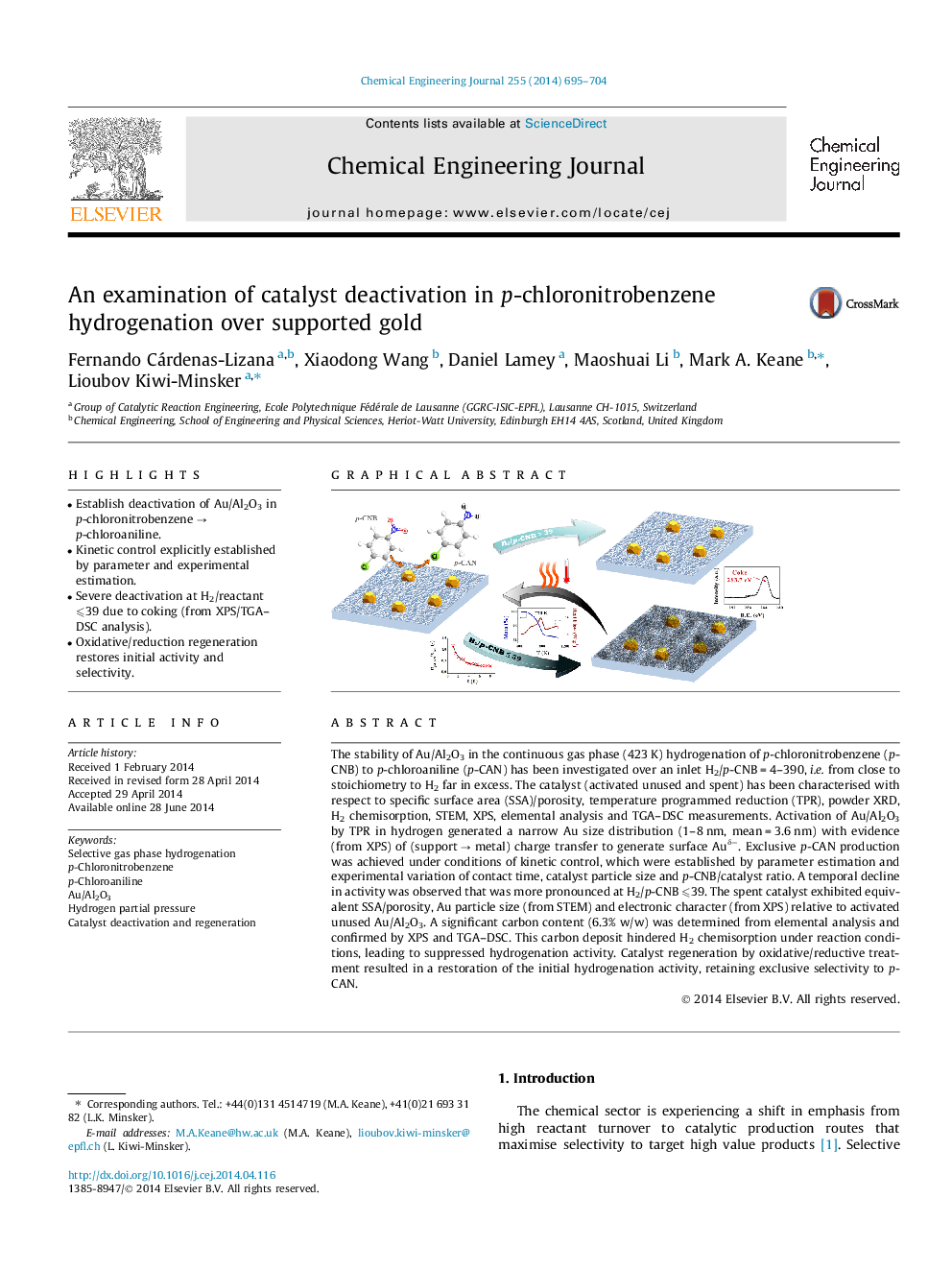| کد مقاله | کد نشریه | سال انتشار | مقاله انگلیسی | نسخه تمام متن |
|---|---|---|---|---|
| 147103 | 456385 | 2014 | 10 صفحه PDF | دانلود رایگان |

• Establish deactivation of Au/Al2O3 in p-chloronitrobenzene → p-chloroaniline.
• Kinetic control explicitly established by parameter and experimental estimation.
• Severe deactivation at H2/reactant ⩽39 due to coking (from XPS/TGA–DSC analysis).
• Oxidative/reduction regeneration restores initial activity and selectivity.
The stability of Au/Al2O3 in the continuous gas phase (423 K) hydrogenation of p-chloronitrobenzene (p-CNB) to p-chloroaniline (p-CAN) has been investigated over an inlet H2/p-CNB = 4–390, i.e. from close to stoichiometry to H2 far in excess. The catalyst (activated unused and spent) has been characterised with respect to specific surface area (SSA)/porosity, temperature programmed reduction (TPR), powder XRD, H2 chemisorption, STEM, XPS, elemental analysis and TGA–DSC measurements. Activation of Au/Al2O3 by TPR in hydrogen generated a narrow Au size distribution (1–8 nm, mean = 3.6 nm) with evidence (from XPS) of (support → metal) charge transfer to generate surface Auδ−. Exclusive p-CAN production was achieved under conditions of kinetic control, which were established by parameter estimation and experimental variation of contact time, catalyst particle size and p-CNB/catalyst ratio. A temporal decline in activity was observed that was more pronounced at H2/p-CNB ⩽39. The spent catalyst exhibited equivalent SSA/porosity, Au particle size (from STEM) and electronic character (from XPS) relative to activated unused Au/Al2O3. A significant carbon content (6.3% w/w) was determined from elemental analysis and confirmed by XPS and TGA–DSC. This carbon deposit hindered H2 chemisorption under reaction conditions, leading to suppressed hydrogenation activity. Catalyst regeneration by oxidative/reductive treatment resulted in a restoration of the initial hydrogenation activity, retaining exclusive selectivity to p-CAN.
Figure optionsDownload as PowerPoint slide
Journal: Chemical Engineering Journal - Volume 255, 1 November 2014, Pages 695–704